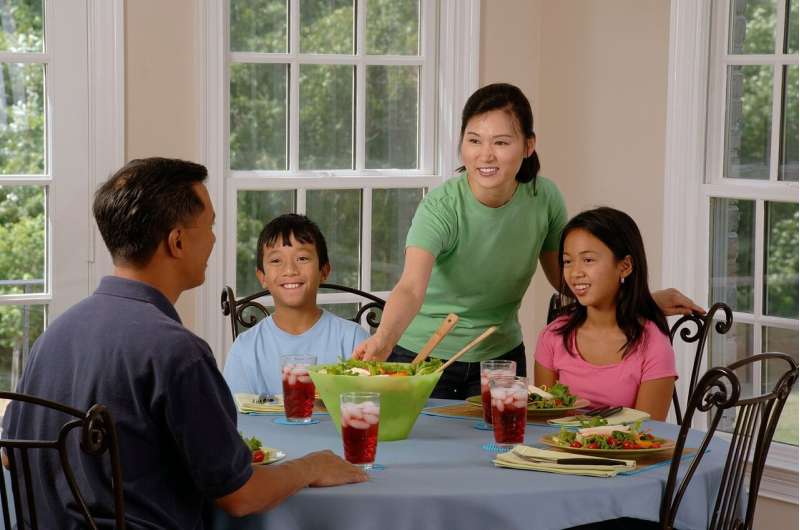
While the lockdowns associated with the COVID-19 pandemic led many families to eat more meals at home, they had an additional benefit: an increase in the quality of family time during those dinners, according to research published in Couple and Family Psychology: Research and Practice titled “How COVID-19 expanded the family dinner table: Greater frequency linked with improved quality and new ways of eating together.”
The study found that families who ate together more often during the pandemic also had more positive interactions, shared news and information, and even embraced technology such as videoconferencing to connect with distant family members.
“The predominance of past research on family dinners has focused on frequency as the key predictor of benefits for children and adolescents,” said lead author Anne Fishel, Ph.D., a clinician and researcher in family therapy at Massachusetts General Hospital.
“This study highlights the importance of examining both frequency and quality to understand the full picture of how shared meals can impact families.”
Researchers examined data from a survey of 517 ethnically and socioeconomically diverse parents across the United States, administered in May 2021. Their aim was to investigate changes in family dinner frequency and quality during the COVID-19 pandemic.
Participants were asked about dinner frequency, quality and post-pandemic expectations. The survey included questions about positive and negative interactions, family support and incorporation of the outside world.
They were asked questions such as, “During the pandemic, did all or most of the people living in your home eat dinner together less, about the same, or more than compared to before the pandemic?” Participants then provided answers ranging on a scale of 1–5, 1 being “much less” and 5 being “much more.”
Over 60% of respondents reported eating dinner together more often during the pandemic compared with pre-pandemic times. There was also a significant increase in positive interactions (e.g, expressing gratitude, laughing or feeling connected) during family meals.
“Specifically, 56% said they increased talking about their days during dinner, 60% said they increased talking about their identity as a family, 60% said they increased expressing gratitude, 67% said they increased laughing together and 59% said they felt more connected to each other around the dinner table,” said Fishel. This positive association was evident across income levels, education, age, gender and race.
The pandemic introduced new aspects to family dinners, including remote dining with extended family members and more discussions about current events, according to Fishel.
Many families turned to videoconferencing to connect with extended family, potentially strengthening a sense of belonging to a larger family unit. Most parents who increased the use of technology for remote dinners during the pandemic reported that they plan to continue this practice as the pandemic subsides.
The researchers also found an increase in families incorporating news and information from the outside world into their dinner conversations, potentially offering a safe space for children to discuss anxieties and questions with their parents.
Overall, this study suggests that the increased frequency of family dinners during the pandemic may have had lasting positive effects on family dynamics, according to Fishel.
“The pandemic changed many aspects of our lives, some for the better. Even though parents did not purposely sign up to have more shared mealtimes, increases in family dinners were largely linked with improvements in the quality of pandemic-era family dinners,” she said.
The findings also highlight the potential benefits of using technology to connect with extended family and incorporating current events into dinner conversations.
“The continued use of remote technology to connect with those not physically present may bring ongoing opportunities for family bonding and children’s feeling a sense of belonging to a larger unit, which we know is protective for their well-being,” said Fishel.
More information:
Anne K. Fishel et al. How COVID-19 expanded the family dinner table: Greater frequency linked with improved quality and new ways of eating together. Couple and Family Psychology: Research and Practice (2024) doi.org/10.1037/cfp0000268
Citation:
How COVID-19 transformed family dinners (2024, October 31)
retrieved 31 October 2024
from https://medicalxpress.com/news/2024-10-covid-family-dinners.html
This document is subject to copyright. Apart from any fair dealing for the purpose of private study or research, no
part may be reproduced without the written permission. The content is provided for information purposes only.




